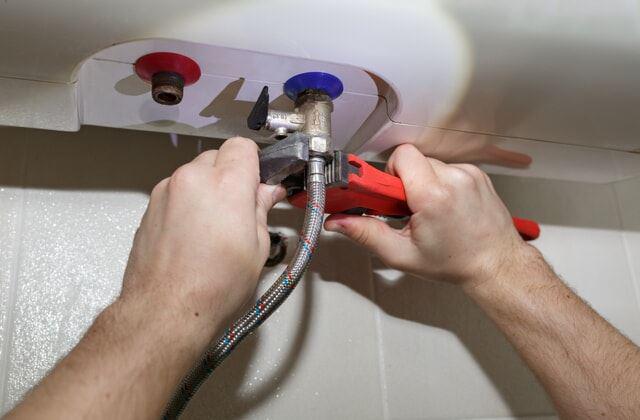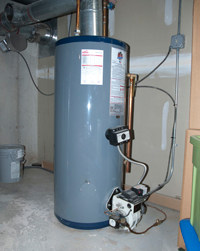How to Effectively Care for Your Home's Hot Water SystemMaintaining Your Home's Hot Water System: Important Tips
How to Effectively Care for Your Home's Hot Water SystemMaintaining Your Home's Hot Water System: Important Tips
Blog Article
The article author is making a few great points on the subject of Water Heater Maintenance Tips You Can't Afford to Forget overall in this content down the page.

Hot water is vital for daily comfort, whether it's for a refreshing shower or cleaning dishes. To ensure your hot water system runs efficiently and lasts longer, routine upkeep is key. This article offers useful ideas and understandings on just how to keep your home's warm water system to stay clear of disruptions and pricey fixings.
Introduction
Maintaining your home's hot water system could appear complicated, however with a couple of easy steps, you can ensure it operates smoothly for years to come. This guide covers everything from understanding your hot water system to do it yourself upkeep suggestions and understanding when to contact expert assistance.
Significance of Maintaining Your Hot Water System
Routine maintenance not only extends the lifespan of your warm water system yet likewise guarantees it operates efficiently. Disregarding maintenance can result in decreased efficiency, greater power expenses, and even premature failing of the system.
Signs Your Hot Water System Demands Upkeep
Understanding when your hot water system needs focus can stop major concerns. Look out for indicators such as inconsistent water temperature level, odd noises from the heating system, or rusty water.
Purging the Water Heater
Purging your hot water heater eliminates sediment accumulation, improving effectiveness and prolonging its life.
Monitoring and Replacing Anode Rods
Anode poles prevent corrosion inside the container. Examining and changing them when worn out is critical.
Complicated Concerns Requiring Specialist Aid
Instances include significant leakages, electrical troubles, or if your water heater is constantly underperforming.
Regular Professional Upkeep Perks
Professional maintenance can consist of comprehensive examinations, tune-ups, and ensuring compliance with safety and security standards.
Checking and Changing Temperature Level Settings
Changing the temperature level settings guarantees optimum performance and security.
DIY Tips for Maintenance
You can execute several upkeep tasks on your own to keep your hot water system in leading condition.
Looking for Leakages
Routinely evaluate pipes and links for leakages, as these can result in water damages and higher expenses.
Understanding Your Hot Water System
Before diving right into upkeep tasks, it's valuable to recognize the basic parts of your hot water system. Typically, this includes the water heater itself, pipelines, anode poles, and temperature level controls.
Monthly Maintenance Tasks
Routine regular monthly checks can aid catch minor issues before they intensify.
Checking Stress Alleviation Valves
Examining the pressure relief valve ensures it operates appropriately and prevents excessive pressure buildup.
Protecting Pipes
Protecting hot water pipelines lowers warmth loss and can conserve power.
When to Call a Specialist
While do it yourself upkeep is beneficial, some issues require specialist knowledge.
Verdict
Normal upkeep of your home's hot water system is important for effectiveness, long life, and price financial savings. By following these ideas and recognizing when to look for specialist help, you can ensure a dependable supply of hot water without unforeseen interruptions.
How to Maintain an Instant Hot Water Heater
Before tinkering with your hot water heater, make sure that it’s not powered on. You also have to turn off the main circuit breaker and shut off the main gas line to prevent accidents. Also turn off the water valves connected to your unit to prevent water from flowing into and out of the appliance. 2. When you’re done, you have to detach the purge valves’ caps. These look like the letter “T” and are situated on either side of the water valves. Doing so will release any pressure that has accumulated inside the valves while at the same time avoid hot water from shooting out and burning your skin. 3. When the purge valves’ caps are removed, you have to connect your hosing lines to the valves. Your unit should have come with three hoses but if it didn’t, you can purchase these things from any hardware or home repair shops. You can also get them from retail stores that sell water heating systems. Read the user’s manual and follow it to complete this task properly. When the hosing lines are connected, open the purge port’s valves. 4. You should never use harsh chemical cleaners or solutions when cleaning your unit. Make use of white vinegar instead. It should be undiluted and you’ll probably use about 2 gallons. 5. Now flush your water heater. This task should probably take about 40 minutes. We can’t give you specific directions for this because the procedure is carried out depending on the type, model and brand of your heater. With that being said, refer to the user’s manual. 6. When you’re done draining the unit, you have to turn off the purge port valves again. Remove the hosing lines that you earlier installed on each of the water valves. Put the valve caps (purge port) back in their respective places and be very careful so as not to damage the rubber discs that are found inside these caps. 7. Now that everything’s back in place, check your user’s manual again to find out how to reactivate your water heating system. 8. Once it is working, turn one of your hot water faucets on just to let air pass through the heater’s water supply pipes. Leave the tap on until water flows smoothly out of it. https://www.orrplumbing.com/blog/2014/september/how-to-maintain-an-instant-hot-water-heater/

I found that blog entry on Water Heater Maintenance Tips You Can't Afford to Forget when doing a lookup on the web. Liked our post? Please share it. Let somebody else discover it. I recognize the value of your readership.
Learn More Report this page